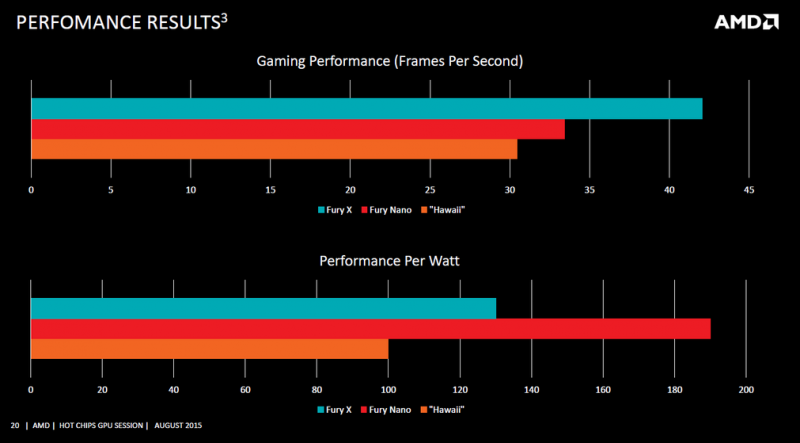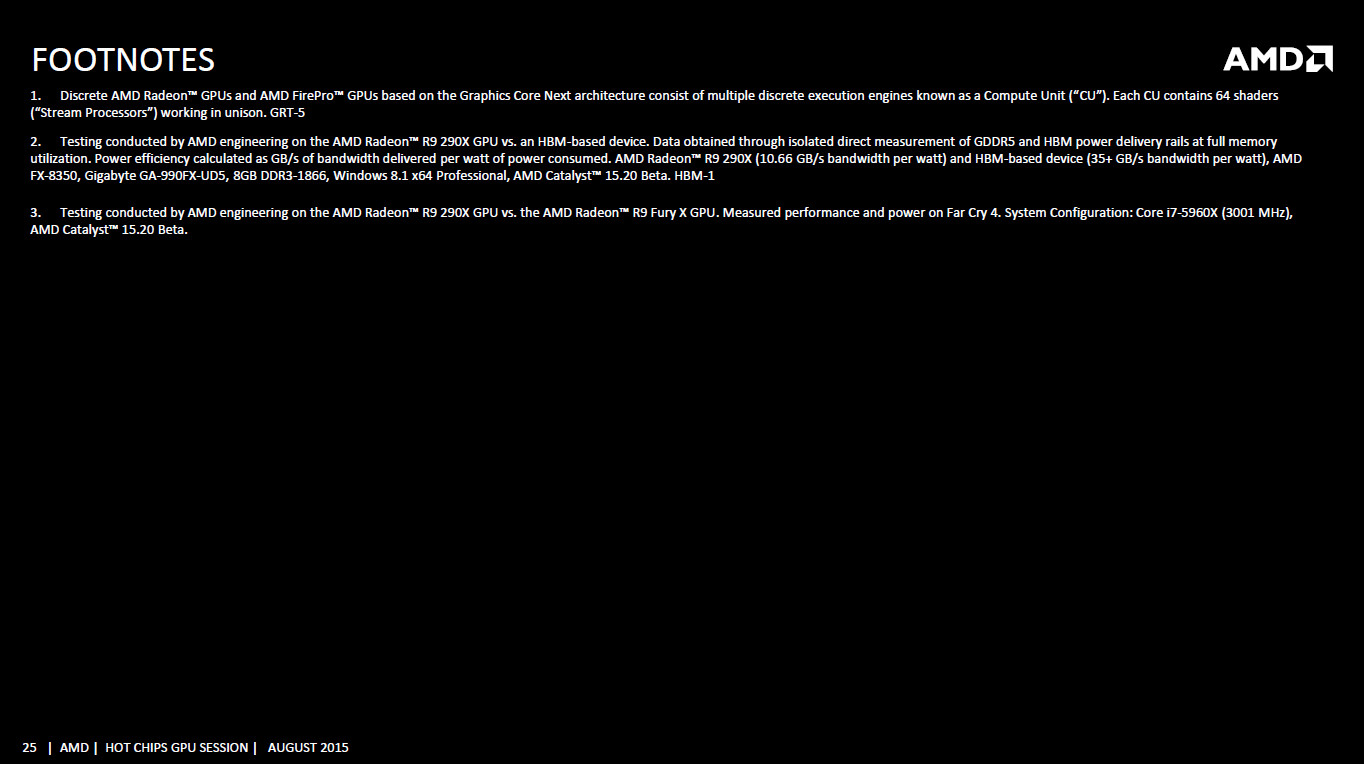
It shouldn't be too long before AMD announces the Radeon R9 Nano, but before we see any official details, a leaked slide has appeared that gives us a good indication of what the graphics card will bring in terms of performance.
The leaked image comes courtesy of German website Golem, who obtained the slide from AMD's Hot Chips GPU Session in California. While the slide does contain an obvious spelling error in the title, the performance results shown in the slide look pretty legitimate.
For starters, the R9 Nano's raw performance appears to be slightly ahead of AMD's Hawaii-based Radeon R9 290X in what's apparently a Far Cry 4 benchmark at 4K. More importantly, the R9 Nano smashes both the R9 290X and the R9 Fury X in performance per watt testing, with the Nano recording almost 1.9x the performance per watt of the R9 290X.
Considering the performance figures shown above and the known TDP of the R9 290X (290W), the R9 Nano and its Fiji GPU will likely have a TDP somewhere in the 150 to 175 watt range. This would be a great result for AMD, who have previously struggled to produce high-performance cards with low power consumption.
The R9 Nano is set to be an awesome card for compact system builders, as it features a board just 15cm in length that will fit perfectly into mini-ITX gaming rigs. Considering performance is now suggested to be as good as (or better than) the R9 290X, the R9 Nano could be used for some seriously powerful living room PCs, for example.
AMD is expected to launch the R9 Nano in the coming weeks, so stay tuned for more information.
https://www.techspot.com/news/61873-leaked-amd-radeon-r9-nano-performance.html

